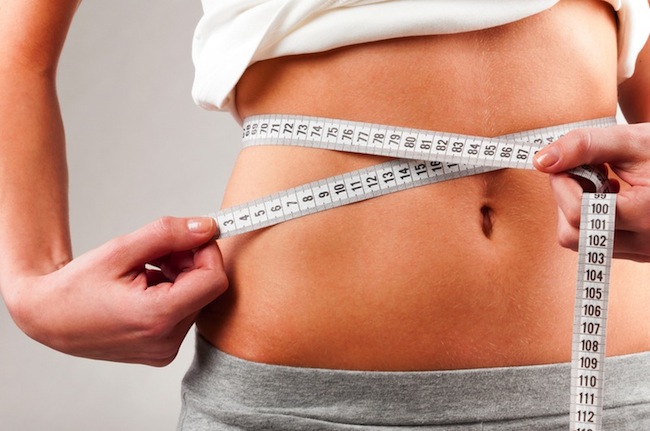Table of Contents
ToggleDrop Belly Fat: Unveiling 5 Powerful Strategies for Targeted Results
Losing belly fat, or fat around the torso including the hips and lower back is an area a lot of women find difficult to drop. Unfortunately, fat loss isn’t selective in the sense you can actively target fat loss in certain areas with exercise (those endless crunches aren’t going to strip that belly fat, just like the triceps extensions aren’t going to reduce the fat on the back of your arms). However, what you can do is maximise your training, nutrition, and lifestyle by optimising your hormones to burn more in that area. In this article, we are going to cover 5 of the most effective ways you can do this.
High-Intensity Interval Training (HIIT)
HIIT is one of the most effective ways to burn calories out there. HIIT stands for high-intensity interval training and is completed in rounds of low intensity followed immediately by high intensity, for example, 30 seconds slow jog then 30 seconds sprinting until you have done 10-12 of each. HIIT improves excess post-exercise oxygen consumption (EPOC) which allows your body to remain calorie-burning for up to 24 hours after the workout is complete (1). Which means you can burn calories while you sleep.
HIIT is extremely effective at targeting stubborn fat sites around the hips, tummy, and lower back as it improves insulin sensitivity (2). It does this by activating AMPK which increases fatty acid oxidation (2) allowing us to burn off those unwanted fat stores. Further, a study also showed HIIT was more effective at reducing abdominal fat than moderate-intensity continuous training (MICT) in women (3).
HIIT is especially useful because it can be done in shorter time frames (perfect for the time-poor). 8-12 minutes of HIIT training is all you require to put your body into an effective calorie-burning mode for up to 24 hours. What’s more is that in several studies, high-intensity training appears to induce superior improvements in aerobic fitness (4). The fitter you are the more likely you will be able to complete more successful and longer workouts. Not only does HIIT help you burn stubborn fat it also helps to improve your cardiovascular health.
Eat a Balanced Diet
Eating a balanced diet is one of the best things you can do when it comes to getting a flat stomach, after all, abs are made in the kitchen. Following a training regime that has been tailored to your needs and eating smaller, more frequent meals throughout the day will help combat cravings and optimize fat loss. 4-5 meals a day, which are high in protein and contain balanced portions of healthy fats and carbohydrates are essential to stripping abdominal fat. Low GI carbohydrates should be your priority when losing weight and you need to replace high GI carbs such as chips and white bread with low GI carbohydrate options. Low GI carbs provide you with a tapered release of energy as they digest slower which means they will keep you fuller for longer reducing the urge for you to snack.
A study demonstrated greater weight loss effects when participants followed an energy-restricted diet based on low-GI carbohydrate foods as opposed to the equivalent diet based on high-GI foods (5). Choosing meals that also contain a lean protein source as the main component of the meal will also help to curb appetite and keep you satisfied. Protein boosts the production of satiety-revving hormones, aids in preventing blood sugar spikes, and helps to prevent fat storage. Most importantly though protein helps your body build lean muscle, the ultimate determiner of your metabolic rate. The more muscle you have the more fat you will burn by doing nothing. Which will help give you that flatter look through your torso.
Manage Stress
Stress can be detrimental to your fat loss journey and can prevent you from achieving that flat stomach you desire so much. When we are subject to mental or physical stressors our bodies release cortisol to prepare us to run or fight (fight or flight response). If we are stressed a lot, then excessive amounts of cortisol circulating in our bodies can increase fat stores, particularly around the abdomen.
A study indicated women who displayed higher cortisol activity in response to laboratory stress tasks had greater levels of abdominal fat than women who had a lower cortisol response (6). Indicating stress has a profound role in abdominal fat storage. High cortisol levels also affect the body’s ability to manage insulin and therefore a risk factor for insulin resistance. Another study found a link between high cortisol levels, abdominal fat accumulation, and insulin resistance (7). When insulin is negatively affected we are likely to carry more body fat around the hips and waist, among other issues such as fatigue, brain fog, headaches, and mood imbalances.
Bearing this in mind, it is therefore crucial that you keep your stress levels to a minimum. You can do this by partaking in some regular meditation, yoga, and exercise as these have been proven to actively reduce stress. Also, try to set yourself some time out to relax every so often and remove yourself mentally from stressful situations wherever you can.
Strength Train
Strength training is vital when it comes to reducing belly fat. A study found inclusion of progressive strength training twice per week for 16 weeks resulted in decreased visceral abdominal fat by 10.3% and subcutaneous abdominal fat by 11.2% with no changes in body mass. Which means they increased muscle mass whilst significantly decreasing belly fat (7).
There is overwhelming evidence that strength training improves your body’s ability to manage insulin. The participants in the above study were able to improve their insulin sensitivity by 46% (7). Strength-based training is very useful as glucose has the rare opportunity to enter straight into the muscle cells that are being used. This helps in lowering blood glucose levels, and consequently insulin levels (that means less fat around the waist and hips).
Strength training is also very effective at increasing resting metabolic rate (RMR). Studies have compared the effects of strength training vs endurance training on RMR and have reported greater increases in metabolic rate with strength training (8), which as I spoke about earlier allows you to burn more fat at rest. Strength training also increases EPOC allowing you to burn for 24-36 hours after you have finished training. Therefore, participating in activities that provide greater EPOC is favourable to potentiate fat loss (8).
Optimize Sleep
Sleep is often underestimated when it comes to body composition. Studies show there is a correlation between less sleep time and greater fat mass, this is not to say that if you do not get enough sleep you with gain fat. However, lack of sleep does impact insulin secretion and people not getting enough sleep are more likely to develop metabolic disorders such as insulin resistance, type 2 diabetes, and obesity.
One study indicated individuals getting less than 5-6 hours of sleep and individuals getting too much sleep (> 9 hours) were both more likely to store visceral fat around the abdomen than those sleeping 7-8 hours per night (8).
Another study indicated that just one night of sleep deprivation decreased insulin sensitivity by 33% (9). This demonstrates the detrimental effect lack of sleep can have on insulin sensitivity. The study indicates the importance of adequate sleep in maintaining blood sugar levels and reducing the risk for metabolic diseases such as obesity and diabetes. To optimise your hormones and metabolic rate to enhance fat loss make sure you always get a healthy amount of sleep each night and catch up where you can if you miss out.
The above 5 methods to lose belly fat should be undertaken as part of a healthy, balanced diet to optimise weight loss. Perseverance and consistency are the keys to long-term sustained fat loss, it doesn’t happen overnight, it requires a lifestyle change but if you stick at it you will reap all the rewards. If you would like any more information on how you can drop fat from your mid-section email me at mandy@localhost
References
- Skelly, Lauren E., et al. “High-intensity interval exercise induces 24-h energy expenditure similar to traditional endurance exercise despite reduced time commitment.” Applied Physiology, Nutrition, and Metabolism39.7 (2014): 845-848.
- Marcinko, K., Sikkema, S. R., Samaan, M. C., Kemp, B. E., Fullerton, M. D., & Steinberg, G. R. (2015). High-intensity interval training improves liver and adipose tissue insulin sensitivity.Molecular metabolism,4(12), 903-915
- Maillard, F., Rousset, S., Pereira, B., Traore, A., Del Amaze, P. D. P., Boirie, Y., … & Boisseau, N. (2016). High-intensity interval training reduces abdominal fat mass in postmenopausal women with type 2 diabetes. Diabetes & Metabolism.
- De Feo, P. “Is high-intensity exercise better than moderate-intensity exercise for weight loss?.” Nutrition, Metabolism and Cardiovascular Diseases23.11 (2013): 1037-1042.
- Brand-Miller, Janette C., et al. “Glycemic index and obesity.” The American Journal of Clinical nutrition76.1 (2002): 281S-285S.
- Epel, E. S., McEwen, B., Seeman, T., Matthews, K., Castellazzo, G., Brownell, K. D., … & Ickovics, J. R. (2000). Stress and body shape: stress-induced cortisol secretion is consistently greater among women with central fat. Psychosomatic medicine,62(5), 623-632.
- Ibañez, J., Izquierdo, M., Argüelles, I., Forga, L., Larrión, J. L., García-Unciti, M., … & Gorostiaga, E. M. (2005). Twice-weekly progressive resistance training decreases abdominal fat and improves insulin sensitivity in older men with type 2 diabetes. Diabetes care,28(3), 662-667.
- Chaput, J. P., Bouchard, C., & Tremblay, A. (2014). Change in sleep duration and visceral fat accumulation over 6 years in adults.Obesity,22(5), E9-E12.
- Brazier, Yvette. “Sleep well to avoid insulin resistance.” Medical News Today. MediLexicon, Intl., 4 Nov. 2015. Web.





